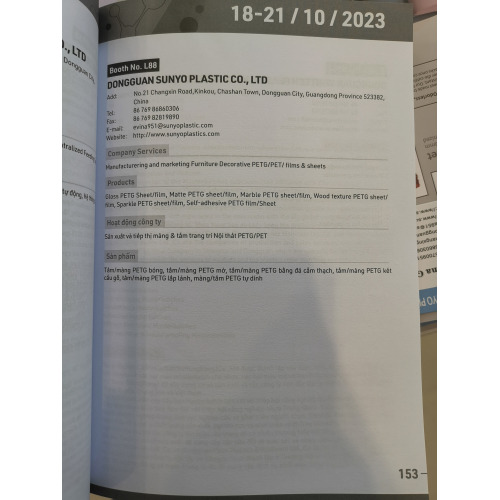The appearance of a product is the result of a complex interaction between the light and the object, the optical properties of the object, and the perception of the person. The appearance is one of the most important business attributes of the product. Printed products must not only have exquisite designs, but also convey relevant information about the products to consumers. Enhancing glossiness is one of the ways to improve the quality of prints. Here we discuss the glossiness and glossiness of prints and their relationship with print quality.
First, gloss, gloss
Luster refers to the property of selective reflection on the surface of an object, which appears as an image of the surface with different degrees of bright spots or objects that overlap with the surface. Gloss is the numerical representation of the surface gloss of an object.
Simply speaking, gloss is the phenomenon of reflection on the surface of an object. It is caused by reflection of light on the surface of an object. Generally, the gloss is divided into metallic luster, pearl luster, silk luster, and the like. Generally for glossy flat specimens such as prints, mirror gloss and open angle contrast gloss are suitable.
Second, the relationship between print and gloss
The reflection of light on the surface of the object can be classified into two types: one is an ideal mirror that reflects all the incident light, and the light is reflected from the specular reflection angle direction; the other is a completely diffuse reflector, which takes incident light. Reflected in all directions with the same brightness; the third is a semi-glossy surface between the two, neither an ideal mirror nor a completely diffuse reflective surface, the surface of most objects in nature belongs to the surface The print surface is also a semi-glossy surface.
When light shines on the surface of the print, a portion of the light enters the ink layer and is selectively absorbed by the ink. After the substrate reflects off the ink layer, the color reflected by the light is the color of the printed product; The ink layer has already been reflected (called surface reflection). This part of the light is not dyed and the reflected light is white light. The gloss of printed products mainly refers to the visual effect of this part of white light.
Obviously, the glossiness of the printed ink surface cannot be too high, because the glossiness is too high, and too much white light will affect the color effect of the print. Assume that the illumination light is incident at an angle of 45°, since the reflected light on the surface is mainly directional reflection, when the viewer's line of sight is perpendicular to the printed matter, the reflected light is less likely to enter the viewer's eyes, and the pattern and color on the print cannot be accurately perceived. .
When the main part of the incident light passes through the ink layer, the part of the colored light that is selectively reflected by the ink and then reflected out is called the main color light. If the surface of the printing ink layer is rough, matt, and the surface reflected light is diffusely reflected in various aspects, the color of the printed matter that people observe is the mixed light of the main color light and the surface reflected light. Due to the addition of surface-reflected white light to the main color light, the color saturation of the print is reduced.
Another optical phenomenon - internal reflection also affects the color of the printed ink layer. When the light entering the ink layer reflects from the surface of the paper to the inner surface of the ink, there is also reflection on the inner surface of the ink layer. This part of light is reflected between the inner surface of the ink layer and the paper multiple times, which is called multiple internal reflection. The reflection state of light on the inner surface of the ink layer and the surface of the ink layer is similar, and when the glossiness of the surface of the ink layer is low, the inner surface also reflects the light diffusely. The number of multiple internal reflections between the inner surface of the ink layer and the paper increases, and the absorption of light by the ink increases, so that the brightness of the printed matter decreases. Therefore, the surface of the ink layer has high glossiness, and the color has higher saturation and higher lightness, and the printed material is vivid and full of colors. On the contrary, the prints are dark and dry.
Third, the impact of print gloss factors
The level of gloss on the printed surface is mainly determined by the level of smoothness of the surface of the printed ink layer. The state of the ink layer is related to the type of paper and ink. In addition, a reasonable printing sequence has a certain influence on the gloss of the printed product.
The rough surface of the paper, because of its loose fiber tissue, the ink film surface can never be smooth. Therefore, to make the surface of the ink layer smooth, the premise is that the paper has high smoothness, high paper tightness, and low absorption rate. Only in this way can a smooth ink film surface be obtained when a sufficiently thick ink is laid on the surface of the paper. Otherwise, the binder in the ink will be partially absorbed by the paper or completely absorbed. The binder is not enough to completely wrap the pigment particles and it is impossible to form a smooth ink film surface. In general, coated paper has a higher gloss than non-coated paper prints.
Another factor that affects gloss is the ink itself. Such as bright fast-drying offset printing ink in the print transfer process has good fluidity, when the ink is printed on the paper, a small amount of low-viscosity kerosene in the ink penetrates the paper, leaving high-viscosity resin and rapid gel fixation, which not only adapt to high speed The requirements of printing, and the graphic ink layer thick, good gloss.
Choosing the right printing color sequence can also play a role in improving the gloss of printed products. For example, when the absorptivity of the printing paper is too high, full-color ink can be printed as the first color. The so-called full color refers to the full color that is distributed over the entire graphic area. Such as: printing warm-colored screen, yellow ink and magenta ink are full-color; when printing cold-colored images, yellow ink and blue ink are full-color. For atypical warm or cool colors. Due to the wide distribution of yellow ink, yellow ink can be considered as a constant full color. When the full color is used as the first color printing, it is equal to giving the paper a primary color first, so that the paper absorbs the ink material of the post printing and reduces, so that they can be flatly flowed on the surface of the paper and the gloss of the printed product is increased.
Because yellow is a weak color. That is printed on white paper less than magenta, blue and black ink conspicuous, sometimes considering that it is difficult to determine the amount of ink when printing, yellow ink inconvenience for the first color printing. In order to increase the gloss, yellow ink can be printed as the last color, so that the yellow ink that is equal to the full version acts as a bright oil to increase the gloss of the print.
After the four-color ink is overprinted, the addition of bright oil or composite plastic film has a very significant effect on improving the glossiness of the printed matter.
To increase the gloss of prints is not only to increase its saturation and lightness, but also to get the luster of the screen - the dazzling effect of white light, just as the gem's charm lies in the sparkling luster. An exquisite print is placed on the shelf, and people can move their feet because of their exquisite colors. It can be seen that its luster is endless. If people stay in the mirror reflection direction of a part of the picture, the visual experience will be a piece of white, there is no beauty at all.
The glossiness of the printed matter is not as high as possible. When selecting a process for improving the glossiness, attention should be paid to the type of the printed matter and the size of the sheet, and the use of the print cannot be degraded to improve the glossiness.
Larger, especially non-rigid substrates, often cannot form a flat surface when placed. If the gloss is too high, the observer will see many large, glare-like reflections of white light on the screen, regardless of the viewing angle. Can not provide people with the full effect of the printing surface. Image and text become fragmented, and the effect is terrible.
Prints used for sales packaging, in order to attract consumer attention, not only in the design to be novel, eye-catching, giving people a sense of pleasure, but also to clearly introduce the consumer's brand, performance, origin and so on. The pattern, form, color, and text content should give consumers the feeling of shock acceptance of information at the same time, so as to receive the best results. Let consumers shook their heads to avoid the sparkling white light in order to see clearly the whole content printed on the package. Obviously it is not desirable. The use of glossiness to improve the color quality of prints should be done without compromising the use of prints.
Reprinted from: "Guangdong printing" Author: Sunyin
■Author: School of Information Engineering, Jiangnan University




